{This post is sponsored by Ball® Fresh Preserving}
Having an organized pantry is the stuff that dreams are made of! Use Ball® Jars of different sizes with airtight Ball® Leak-Proof Storage Lids to make it simple and easily attainable. These tips for organizing your pantry will help you on your way!
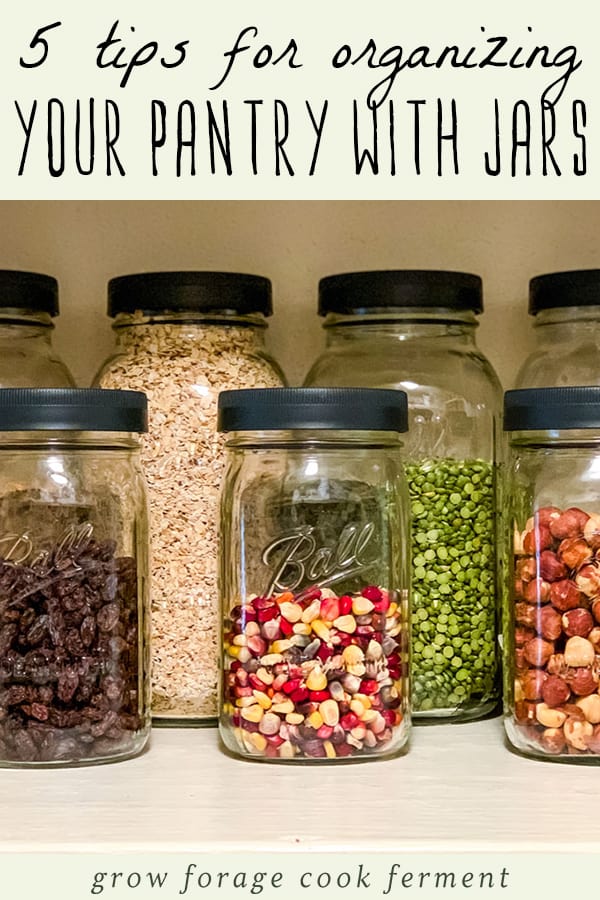
Want to save this post for later?
Use clear glass Ball® Jars to see contents
When you’re organizing a pantry with jars, using clear glass Ball® Jars makes it easy to see what is in each jar at a glance. Canning jars are inexpensive and versatile, and make a pantry look beautiful!
Be sure to rotate the contents of your jars when you buy more to keep things fresh. To do this, start with a clean jar and put the newly bought pantry item in first. Then top it off with what you already had, so that it gets used first. This is a great opportunity to periodically clean your jars, too!
If you are storing things that are light sensitive, such as olive oil purchased in bulk, or dried herbs or infused oils in an herbal apothecary, the Ball® Amber Jars are the perfect choice.
Use different jar sizes as needed
For things that you might keep a lot on hand, such as flour, rice, beans, pasta, and oatmeal, use bigger half gallon or even gallon size jars.
I always make sure to have a lot of Ball® Wide Mouth Half Gallon Jars around, because they are so useful for storing pantry items. We like to stock up on bulk dry goods when we can, so those big jars are always in use!
Ball® Wide Mouth Quart Jars work well for nuts, dried fruit, dehydrated veggies, and popcorn.
I use Ball® Wide Mouth Pint Jars for loose tea and other herbs that I buy in larger quantities.
For culinary herbs and spices, Ball® Mini Jars are perfect! They work equally well for both whole or ground spices, and look great in a spice rack.
I think these mini jars are my new favorite! Aren’t they just perfect?
They would also be great for storing crafting items like beads or buttons, or even for seed saving!
Airtight lids are your friend
One of the main culprits of bulk food items going bad is exposure to air. It’s important to keep an airtight seal on your pantry items that are stored in jars as much as possible.
Thankfully, now you can get Ball® Leak-Proof Storage Lids that have an airtight seal! This will help to protect your pantry items and give them a longer storage life.
Adjust your shelving to fit the jars
If your pantry has adjustable shelves, or if you are building shelving yourself, size up the jars that you will be storing first and then make the shelves fit what you have.
For example, make one shelf two pint jar sizes tall so that you can stack them (especially during canning season). Or make another shelf fit quart or half gallon size jars perfectly.
Whatever you will be using the most of, make sure you have shelving that will work with your jars!
Label and date the jars
Last but certainly not least, be sure to label and date your jars!
Even just a small piece of tape on the back of the jar or on the lid, so you know what exactly is inside and how old it is. Flours can get mixed up especially easy if you haven’t labeled them, even if you think you will remember what they are!
Dating the jars is even more important, especially if you have things that might go rancid over time, like whole grain flour or nuts. More than anything, it’s just good to know how old something is when you haven’t used it in a while.
Another thing we like to do is to print out and tape instructions for how to cook the item on the back of the jar. This makes it easy when it comes time to cook and you don’t want to spend the time looking it up!
That’s all for my pantry organization tips, I hope this helps you create a beautiful and functional bulk food pantry!
Here are some canning recipes that use Ball® Jars:

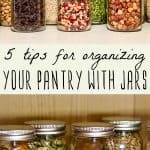
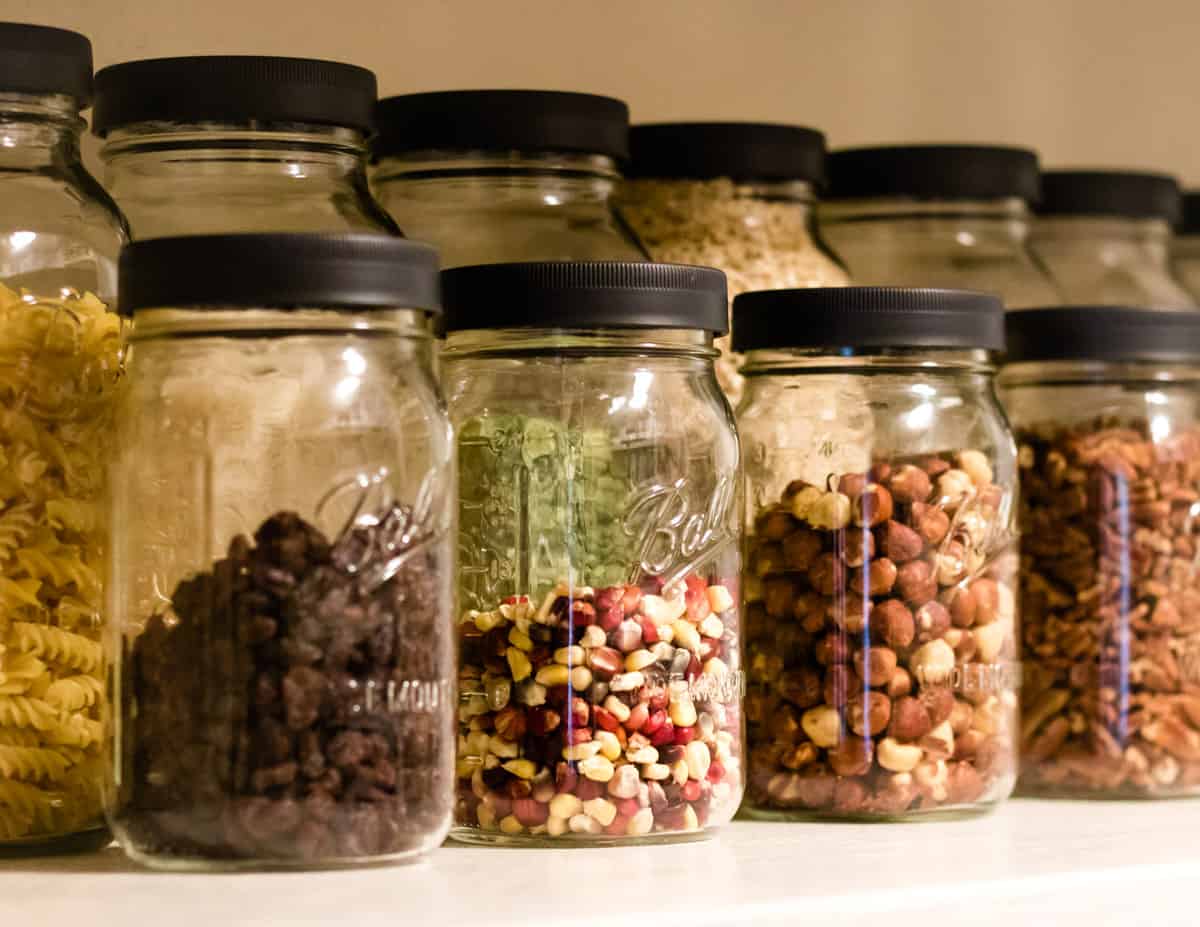
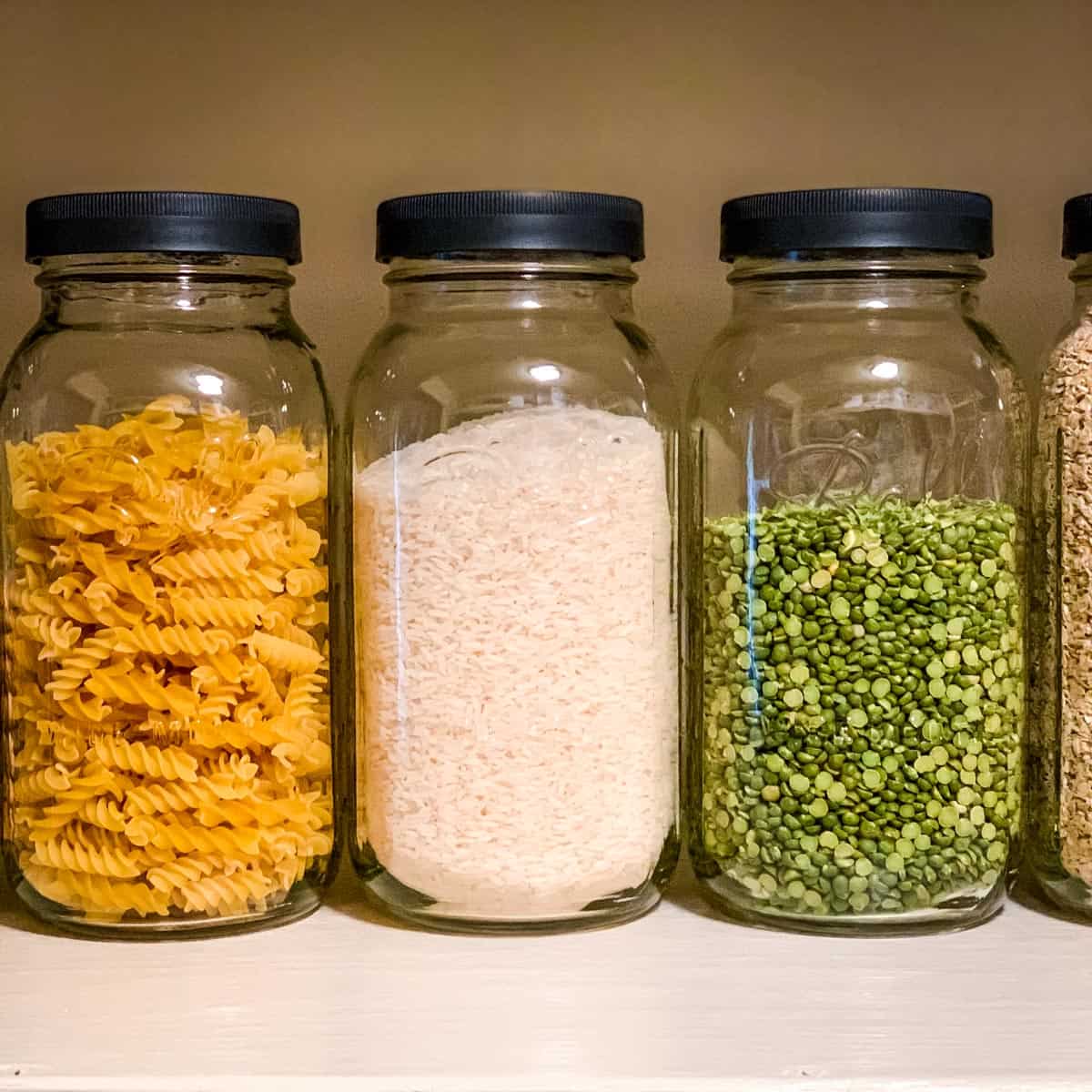
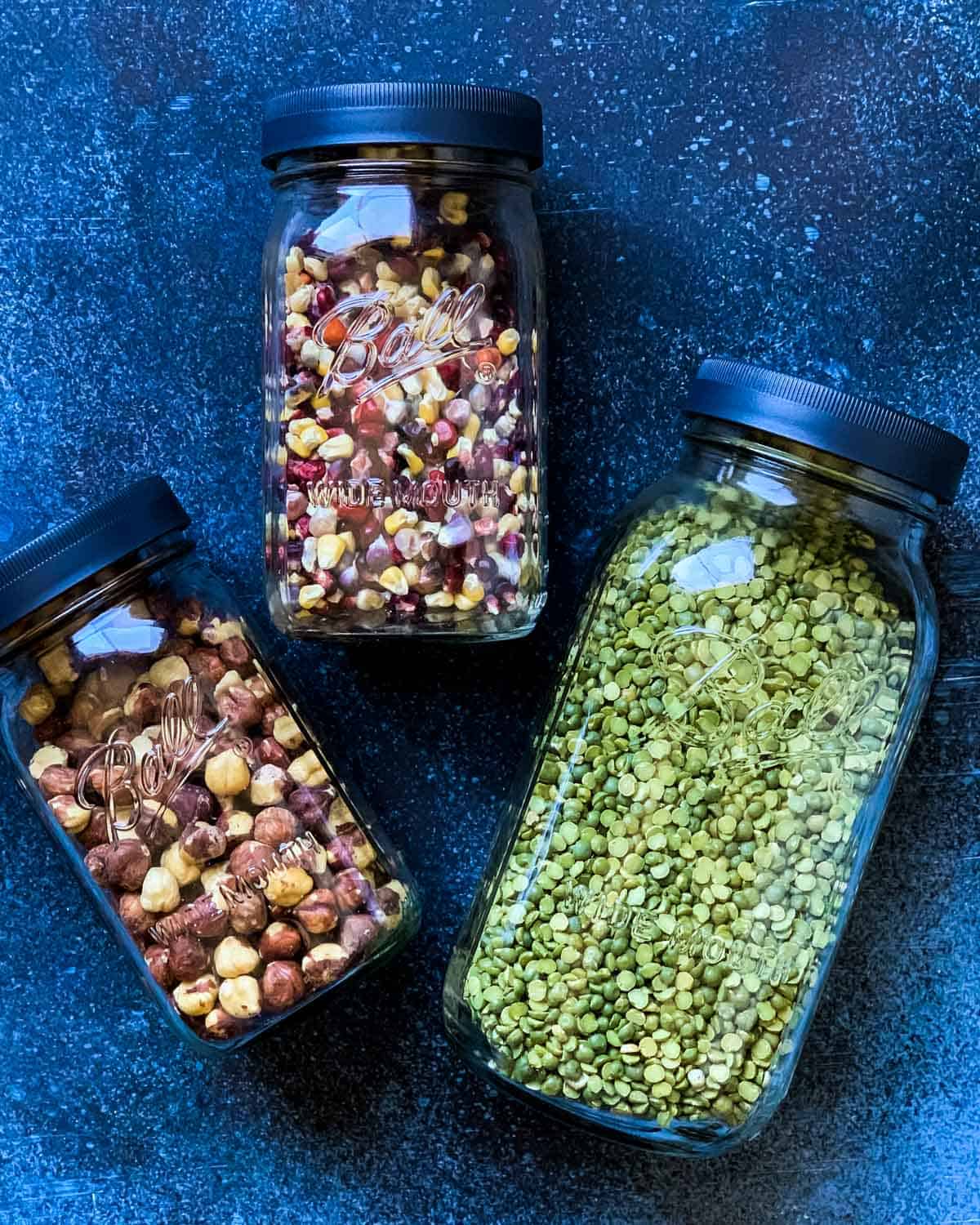
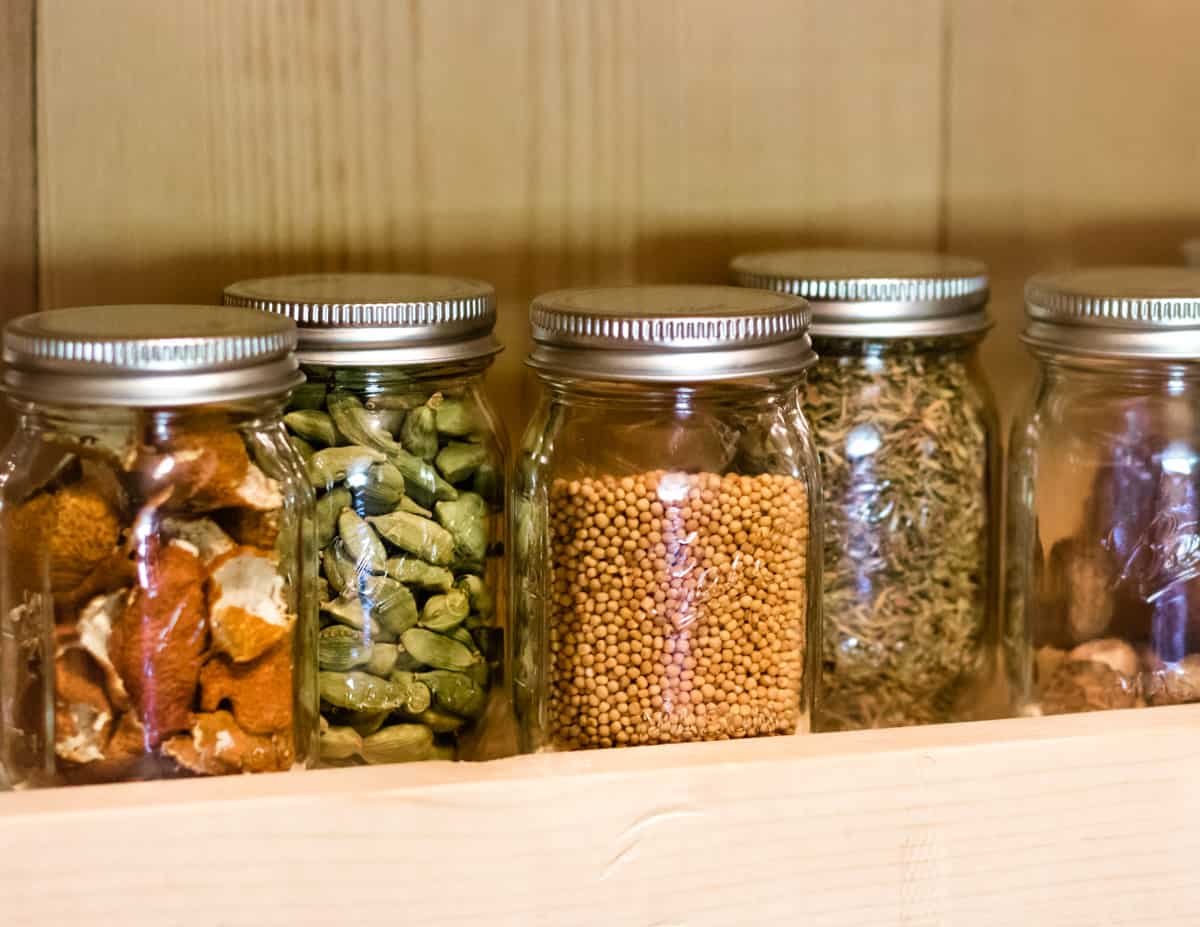
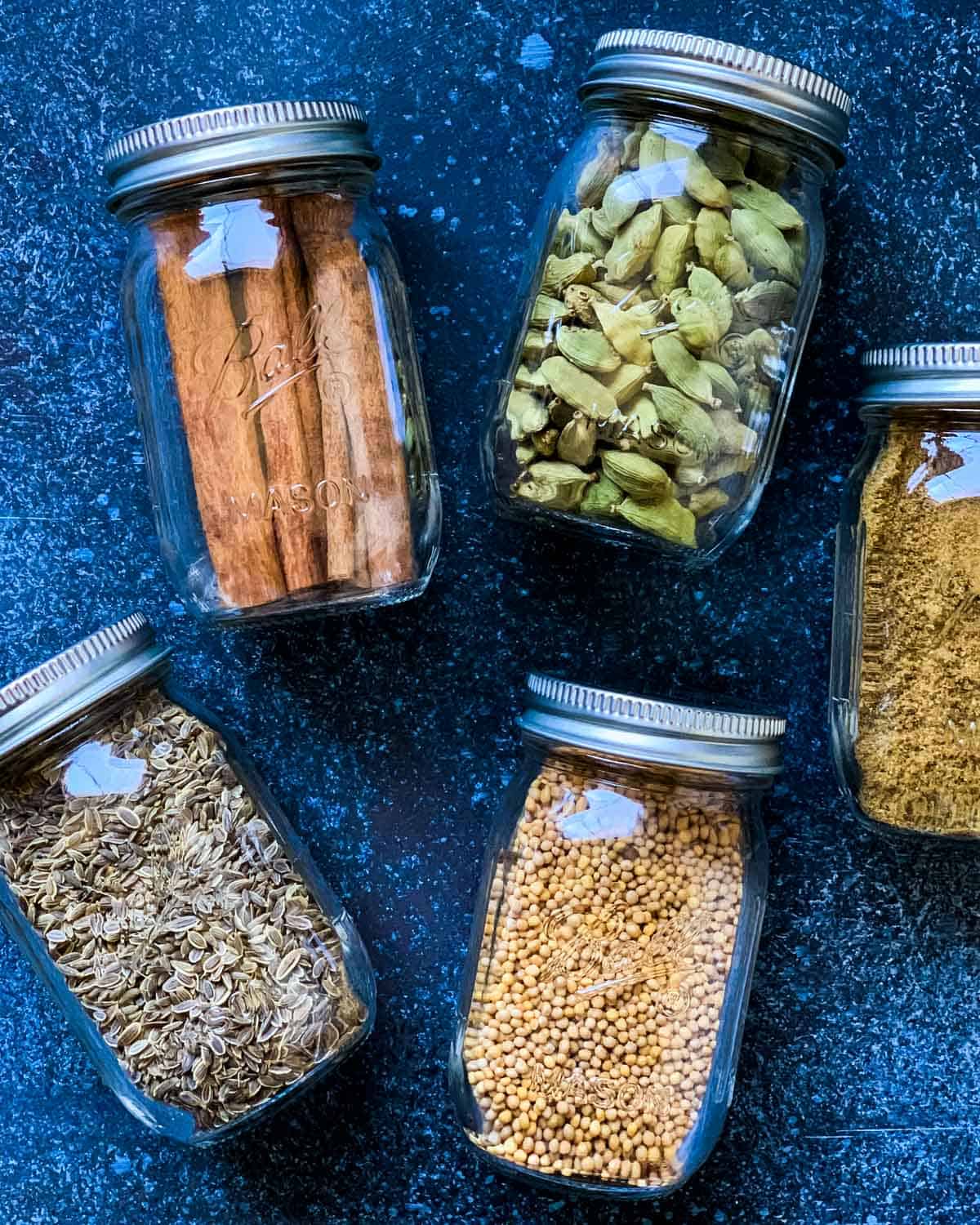
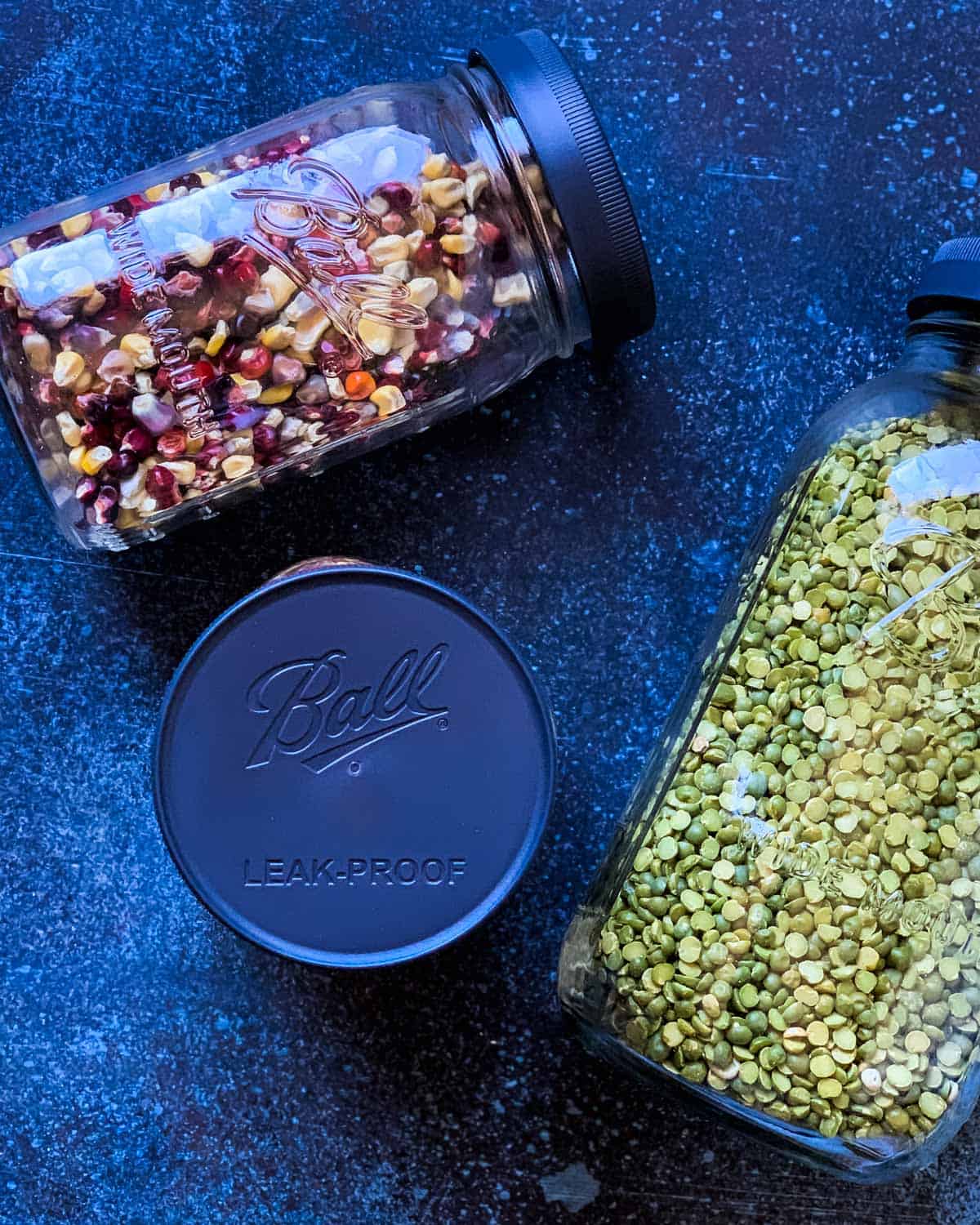
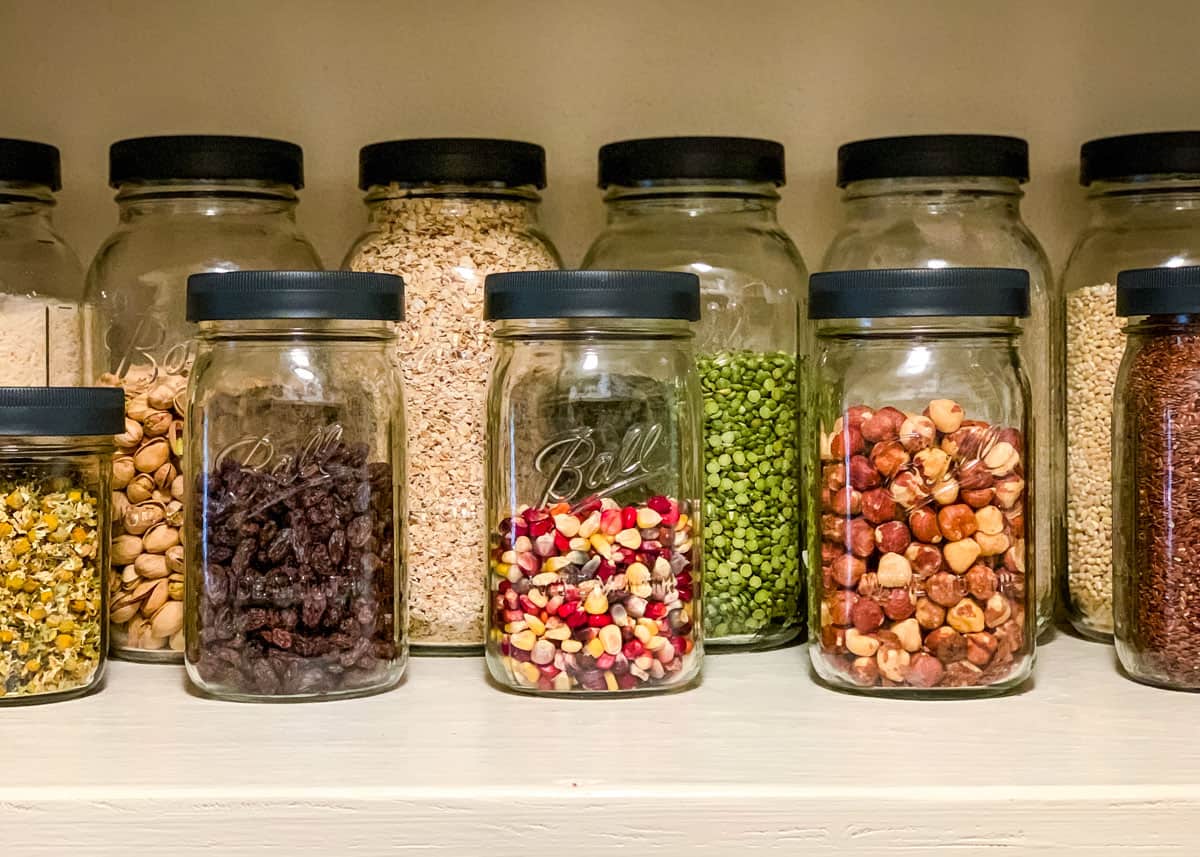

You’re a woman after my own heart. I have a unique obsession with jars. Thanks for sharing about the mini jars!
the contact option didn’t work so I’m trying here. Somewhere you mentioned your favorite place to buy Ball black jar lids I can’t find where you said. Thanks